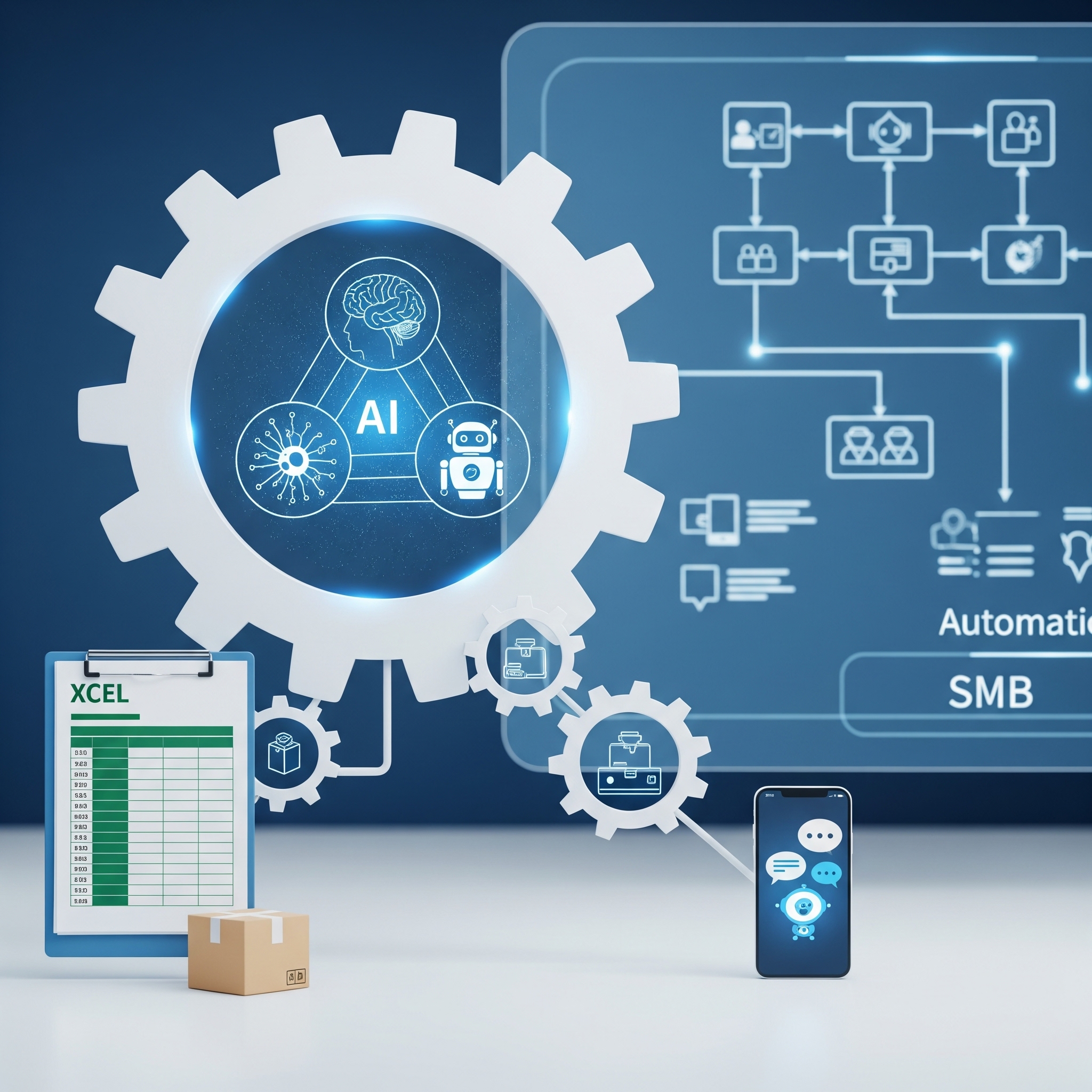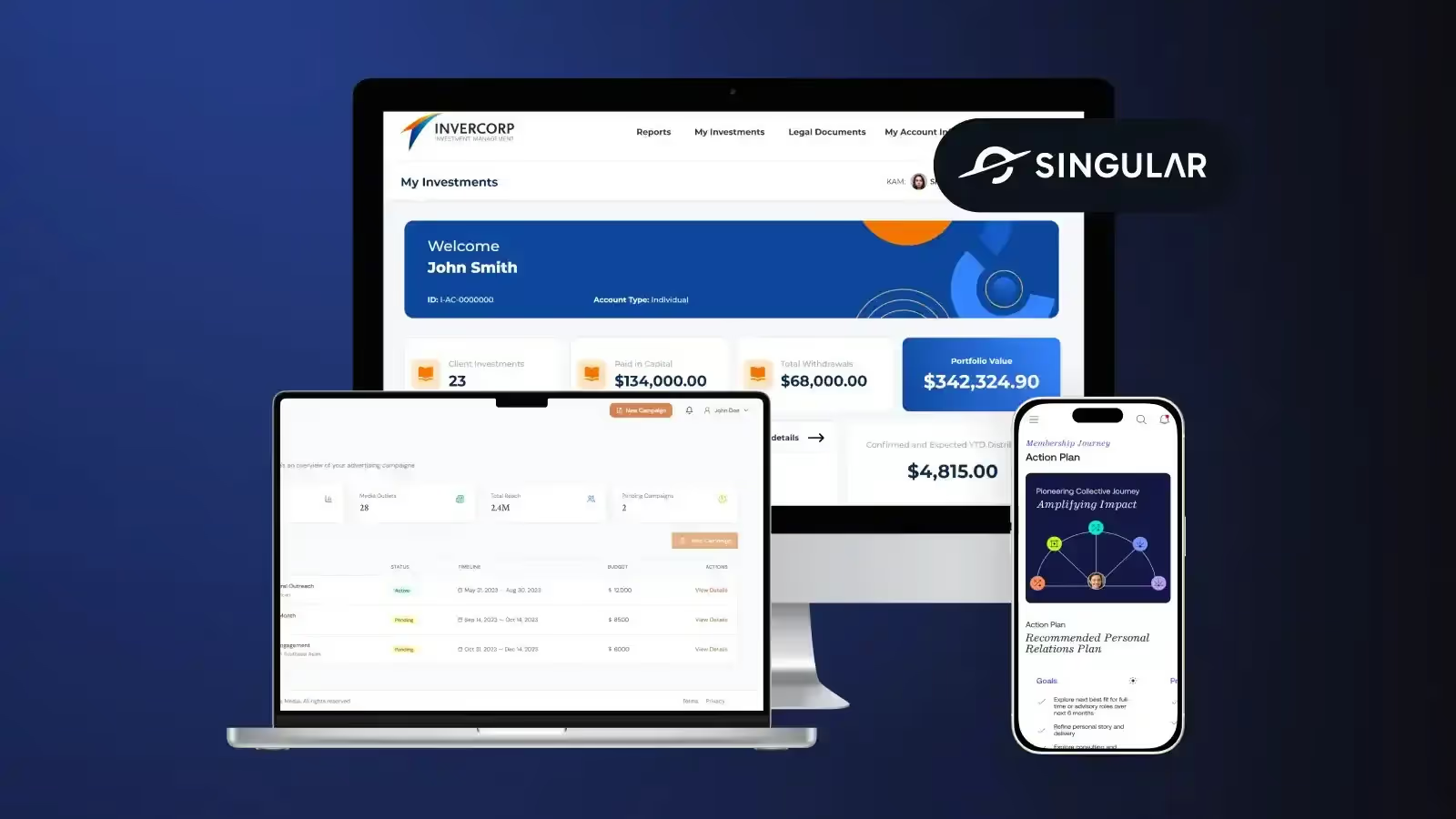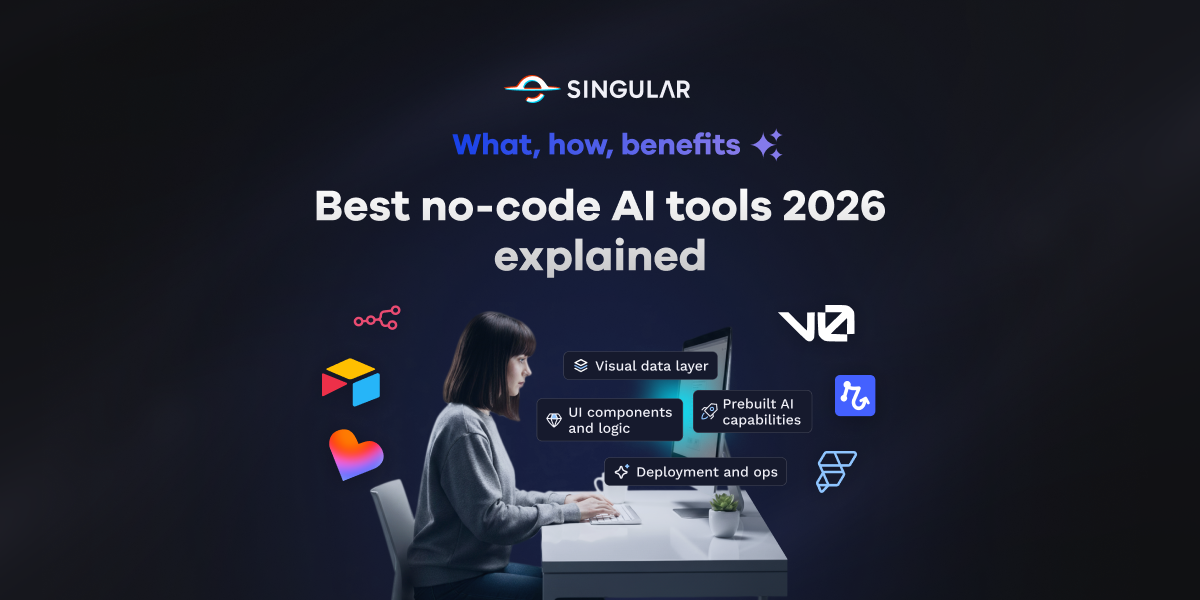The AI Revolution: How SMBs Can Gain a Competitive Edge with Smart Workflows

In today's fast-paced business world, the landscape is constantly shifting. What gave you a competitive edge last year might just be the baseline for survival this year. For small and medium-sized businesses (SMBs), staying ahead often feels like an uphill battle against larger, more resourced competitors. But there's a powerful tool that is leveling the playing field and is now more accessible than ever: Artificial Intelligence (AI). AI is no longer an exclusive technology for large corporations. SMBs that are starting to adopt AI-driven workflows are gaining a significant advantage by automating tasks, optimizing processes, and making smarter, more strategic decisions. Your "AI journey" might seem intimidating, but with the right platforms, the path is clearer and more accessible than ever before.
Airtable: The Ideal Starting Point for Your AI Journey
You might already know Airtable as a flexible hybrid database—a tool that combines the user-friendly interface of a spreadsheet with the power of a relational database. For years, it has been the go-to platform for businesses of all sizes to manage projects, data, and workflows. However, Airtable has now evolved into much more than just a database. It offers a powerful suite of integrated AI tools that allow SMBs to easily weave artificial intelligence directly into their daily operations.
Airtable presents itself as the ideal starting point for any company that wants to explore the potential of AI because it empowers the people who understand the business best—the process owners, the project managers, the marketers—to build and deploy AI solutions without needing to be an expert in data science or programming. It democratizes AI, moving it from the back-office IT team to the frontline of your business.
AI Features That Give You an Unfair Advantage
Airtable's approach is to put the enterprise in full control of how AI is used. The platform is designed to make it simple to build, test, and deploy AI apps and agents. Here are some of its key features that can give your business a direct competitive advantage:
Airtable Omni: This feature is a game-changer. Airtable Omni allows process owners—the people with the deepest understanding of a workflow—to create and orchestrate AI apps. This means you can design an AI solution that perfectly fits your specific needs, rather than trying to adapt a generic one. For instance, a marketing manager could create an AI that helps categorize customer feedback, or a sales team leader could build an agent to automatically score and prioritize leads.
Field Agents: Think of these as your personal AI assistants, but on a massive scale. Airtable allows you to orchestrate thousands of AI agents across all your workflows. Need to automatically summarize a long document? There's a Field Agent for that. Want to classify incoming support tickets? A Field Agent can handle it. This dramatically accelerates daily tasks, freeing up your team to focus on strategic, high-value work.
AI-Model Agnostic: This is a crucial point for future-proofing your business. Airtable gives you the freedom to choose from the leading AI models on the market. You are not locked into a single option. As new and more powerful models emerge, you can easily integrate them, ensuring that your workflows always use the best and most advanced technology available. This flexibility protects your investment and keeps your solutions on the cutting edge.
Admin Control: With the power of AI comes the need for responsible usage. Airtable ensures you have full administrative control over how AI is used within your company. You can decide which workspaces or departments can use AI, set permissions, and monitor usage, ensuring that AI is always deployed in a safe, secure, and compliant manner.
AI-Research: This is where the magic of data-driven decisions truly comes to life. Airtable's AI-Research feature allows you to run deep analyses and get recommendations based on your unique data and business context. Instead of guessing, you can use AI to identify hidden trends, predict outcomes, and gain valuable insights that inform your decision-making processes. For an SMB, this kind of strategic intelligence can be the difference between stagnating and growing rapidly.
AI-Driven Workflow Playbook (Snapshot)
Use this condensed playbook to move from “we should use AI” to a live, governed workflow in weeks—not months.
1. When to Apply It
Run this playbook when a process shows:
- High repetition or manual copy‑paste effort
- Measurable latency (delays hurt revenue, CX, or throughput)
- Clear input + expected output pattern
- Available (even if imperfect) data context
- Low-to-moderate risk if first version is imperfect
2. Step 1: Identify & Qualify a Pilot Process
Ask:
- What task steals disproportionate time from skilled staff?
- Where does work stall waiting for a simple classification, summary, or routing?
- Which process already lives (even partially) inside Airtable or could easily be modeled there?
Pilot selection criteria (score 1–5 each):
- Repetition
- Latency Cost
- Error Impact (inverse: lower risk = better early pilot)
- Data Readiness
- Stakeholder Sponsorship
- Measurability (can we baseline cycle time now?)
3. Process Scoring Worksheet (Text Format – No Table)
List each candidate and assign 1–5 for each dimension. Lower Error Impact is better for an early pilot (because risk is lower). Example formatting:
Candidate: Lead Qualification
Repetition: 5/5
Latency Cost: 4/5
Error Impact: 2/5
Data Readiness: 4/5
Stakeholder Sponsorship: 4/5
Measurability: 5/5
Total Score: 24 (High Priority)
Candidate: Support Ticket Triage
Repetition: 4/5
Latency Cost: 5/5
Error Impact: 3/5
Data Readiness: 5/5
Stakeholder Sponsorship: 5/5
Measurability: 5/5
Total Score: 27 (High Priority)
Candidate: Quarterly Reporting Draft
Repetition: 3/5
Latency Cost: 3/5
Error Impact: 2/5
Data Readiness: 3/5
Stakeholder Sponsorship: 3/5
Measurability: 4/5
Total Score: 18 (Medium Priority)
Decide priority: High (≥24), Medium (18–23), Low (<18). Adjust thresholds to your context.
4. Step 2: Map the Workflow Loop
Canonical loop:
Trigger → Enrich (retrieve data / context / embeddings) → Decide (classification / scoring / routing) → Act (create/update record, send notification, assign owner) → Learn (capture outcomes, corrections, timing).
Document:
- Trigger source (form submission, email, record status change)
- Required contextual fields
- Decision logic (model + confidence thresholds)
- Fallback path (human review conditions)
- Feedback capture (where user confirms / edits output.
5. Step 3: Design in Airtable
- Base Schema: Normalize entities (e.g., Leads, Interactions, Sources, Scores)
- Context Tables: Store labeled examples / historical outcomes
- Omni App: UI for operators to view AI suggestion + accept/override
- Field Agents:
- Summarization Agent (condense free text)
- Classification Agent (segment / priority tier)
- Routing Agent (assign owner)
- Model Strategy: Start with a general model → log misclassifications → refine prompts or specialize later
- Permissions: Restrict who can alter prompts and who can publish
6. Step 4: Instrument & Launch (Pilot)
Baseline BEFORE automation:
- Average cycle time (request to routed)
- Manual touches per item
- Error / rework percentage
Controlled launch:
- Route a small slice (10–20%) initially
- Track confidence vs human overrides
- Capture intervention reasons (wrong category, missing context, low relevance)
7. Step 5: Governance & Risk Controls
- Role matrix: Builder vs Approver vs Operator
- Audit log: Store prompt, model, timestamp, confidence, output
- Human-in-the-loop: Confidence below threshold → review queue
- Rollback plan: Feature flag to revert to manual
- Data hygiene: Scheduled checks for stale context
8. Step 6: Iterate & Expand
Iteration triggers:
- >80–90% acceptance for 2 consecutive weeks
- Cycle time improved ≥ target vs baseline
Expand:
- Add adjacent processes (e.g., proposal drafting after qualification)
Layer intelligence:
- Next best action predictions
- Anomaly alerts
- Daily digest summaries
9. KPI Starter Set
- Cycle Time (Trigger → Act completion)
- Manual Interventions per 100 Runs
- Acceptance Rate (% AI suggestions approved)
- Accuracy Proxy (post-review adjustment rate)
- Throughput per FTE
- Time-to-Detection for misclassifications
- Data Freshness (age of context records)
10. Example Pilot Snapshot (Support Ticket Triage)
- Trigger: New ticket record created
- Enrich: Pull historical customer tier + sentiment
- Decide: Field Agent classifies severity (Low/Med/High) + topic
- Act: Assign queue, set SLA target, generate summary
- Learn: Log human severity changes → retraining dataset
11. Quick Checklist (Pre-Go-Live)
- [ ] Pilot process scored & prioritized
- [ ] Schema + context tables finalized
- [ ] Omni app screens + Field Agents configured
- [ ] Confidence thresholds defined
- [ ] Baseline metrics captured
- [ ] Audit & rollback plan documented
- [ ] Feedback capture field added
- [ ] Stakeholder sign-off obtained
12. Next Step (Free Diagnostic if you can’t self-implement)
Short on time, clean data, or internal bandwidth to run this playbook yourself? Instead of downloading this full guide, request a Free 30-Minute Diagnostic with Singular.
Why AI-Driven Workflows Are Essential for SMBs
Adopting AI workflows isn't just about implementing a new piece of software; it's about fundamentally changing how you work. It's about empowering your team to focus on what matters most. By using intuitive platforms like Airtable to orchestrate AI, SMBs can:
Improve Productivity Dramatically: Imagine the hours saved by automating data entry, classifying emails, managing inventory, or generating draft content. These small efficiencies add up, allowing your team to complete more work in less time.
Make Data-Driven Decisions: Stop relying on gut feelings. AI analysis can provide you with clear, actionable insights into your customers, market trends, and internal processes, allowing you to optimize your business strategies with confidence.
Scale Efficiently: The biggest hurdle for a growing SMB is scaling its operations without a massive increase in costs. AI solutions implemented through a platform like Airtable are designed to grow with your company, automating tasks for 10 users just as easily as they do for 1,000, without requiring a massive infrastructure investment.
Conclusion: It's Time to Get Ready for the Future
2025 is set to be the year when AI-driven workflows stop being a luxury and become a necessity. SMBs that start their journey with platforms like Airtable will be far better positioned to thrive. This isn't about replacing humans with machines; it's about empowering your team with intelligent tools that enhance their work, boost their creativity, and give your business a significant competitive edge.
At Singular, we understand this crucial transition. We are experts in helping you build and implement AI workflows that are perfectly tailored to your company's unique needs, ensuring you are ready for the future of business.
Unlock AI for Your Business — No Coding, No Overwhelm
Imagine your team finally freed from repetitive tasks and focused on what truly drives growth. With Airtable’s AI-powered workflows, small businesses like yours are scaling faster, working smarter, and making confident, data-driven decisions—without the tech complexity.
Singular’s Free 30-Minute AI Workflow Diagnostic is your starting point.
- Personalized to your business
- Clear, actionable insights
- No technical jargon
Book your free AI diagnostic with Singular and start transforming how you work today.
Heading
Dolor enim eu tortor urna sed duis nulla. Aliquam vestibulum, nulla odio nisl vitae. In aliquet pellentesque aenean hac vestibulum turpis mi bibendum diam. Tempor integer aliquam in vitae malesuada fringilla.
Mi tincidunt elit, id quisque ligula ac diam, amet. Vel etiam suspendisse morbi eleifend faucibus eget vestibulum felis. Dictum quis montes, sit sit. Tellus aliquam enim urna, etiam. Mauris posuere vulputate arcu amet, vitae nisi, tellus tincidunt. At feugiat sapien varius id.
Heading 3
Eget quis mi enim, leo lacinia pharetra, semper. Eget in volutpat mollis at volutpat lectus velit, sed auctor. Porttitor fames arcu quis fusce augue enim. Quis at habitant diam at. Suscipit tristique risus, at donec. In turpis vel et quam imperdiet. Ipsum molestie aliquet sodales id est ac volutpat.
Tristique odio senectus nam posuere ornare leo metus, ultricies. Blandit duis ultricies vulputate morbi feugiat cras placerat elit. Aliquam tellus lorem sed ac. Montes, sed mattis pellentesque suscipit accumsan. Cursus viverra aenean magna risus elementum faucibus molestie pellentesque. Arcu ultricies sed mauris vestibulum.
Heading 4
Morbi sed imperdiet in ipsum, adipiscing elit dui lectus. Tellus id scelerisque est ultricies ultricies. Duis est sit sed leo nisl, blandit elit sagittis. Quisque tristique consequat quam sed. Nisl at scelerisque amet nulla purus habitasse.

Heading 5
Morbi sed imperdiet in ipsum, adipiscing elit dui lectus. Tellus id scelerisque est ultricies ultricies. Duis est sit sed leo nisl, blandit elit sagittis. Quisque tristique consequat quam sed. Nisl at scelerisque amet nulla purus habitasse.
"Ipsum sit mattis nulla quam nulla. Gravida id gravida ac enim mauris id. Non pellentesque congue eget consectetur turpis. Sapien, dictum molestie sem tempor. Diam elit, orci, tincidunt aenean tempus."
Heading 6
Nunc sed faucibus bibendum feugiat sed interdum. Ipsum egestas condimentum mi massa. In tincidunt pharetra consectetur sed duis facilisis metus. Etiam egestas in nec sed et. Quis lobortis at sit dictum eget nibh tortor commodo cursus.
What is Singular Innovation
Lorem ipsum dolor sit amet, consectetur adipiscing elit. Suspendisse varius enim in eros elementum tristique.






%20(1).avif)